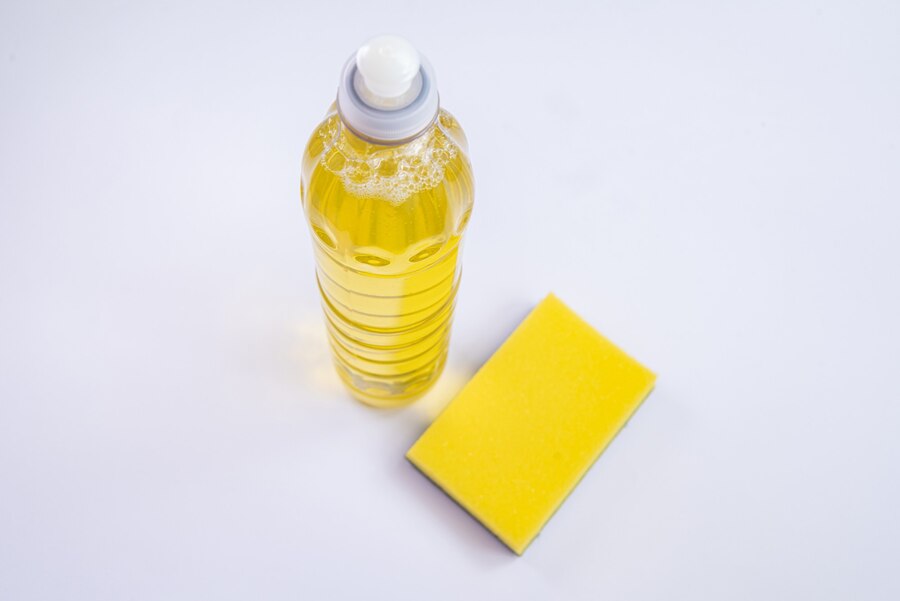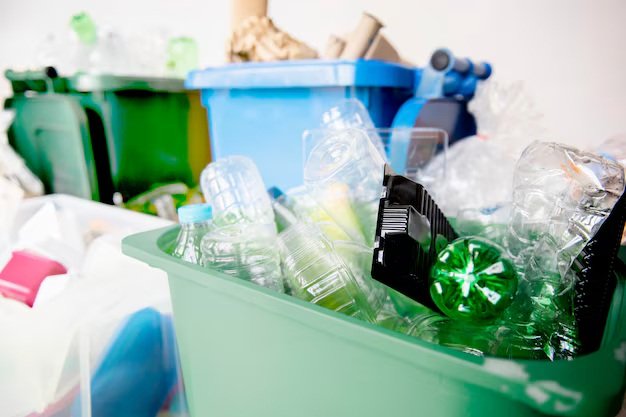How to Dispose of Cooking Oil Environmentally at Home
Cooking is one of life’s simple joys—whether it’s frying crispy golden fries, searing the perfect steak, or making a comforting stir-fry. But when the cooking is done, we’re often left with a messy, greasy problem: used cooking oil. If you’ve ever stood by your sink wondering what to do with that leftover oil, you’re not alone.
Many people assume it’s fine to pour it down the drain, but this is one of the worst things you can do. Over time, oil solidifies, clogging pipes and leading to expensive plumbing repairs. Even worse, when it enters the sewage system, it can cause massive fatbergs—huge, solid blockages that wreak havoc on city sewers.
Beyond household troubles, improper oil disposal harms the environment. When oil reaches rivers and oceans, it forms a greasy layer on the water’s surface, reducing oxygen levels and endangering aquatic life.
But don’t worry—disposing of cooking oil properly isn’t complicated! In this guide, I’ll walk you through simple, eco-friendly ways to get rid of used oil, including recycling, composting, and creative reuses. With just a little effort, you can protect your home, your community, and the planet.

In This Article
- The Environmental Impact of Improper Cooking Oil Disposal
- Safe and Sustainable Methods for Disposing of Cooking Oil
- Innovative Products for Oil Solidification
- Reusing Cooking Oil the Right Way
- Personal Experience
- Expert Insight: Safe Oil Disposal
The Environmental Impact of Improper Cooking Oil Disposal
Clogged Pipes and Costly Repairs
Imagine this: you’re washing up after a delicious homemade meal, and you pour leftover oil straight down the drain. At first, it flows smoothly, but what you don’t see is that as it cools, it thickens. Over time, this sticky mess builds up in your pipes, trapping food scraps and debris. Before you know it, your sink is draining slowly—or worse, completely blocked.
Plumbers see this all the time. One study found that nearly 47% of household plumbing issues are caused by grease buildup. And fixing it isn’t cheap. A simple drain cleaning can cost $150-$300, while major sewer backups can run into the thousands.
The Damage Doesn’t Stop There
When oil makes its way into sewage systems, it mixes with other waste, creating fatbergs—huge, rock-hard masses of grease and debris that clog entire sewer lines. In 2017, London discovered a 130-ton fatberg, the size of a bus, blocking its drains. These monsters cause sewage backups, leading to environmental contamination and expensive cleanups.
Harming Our Water and Wildlife
If oil reaches rivers and lakes, it forms a slick layer on the surface, blocking oxygen from entering the water. This suffocates fish and other aquatic life. Just one litre of oil can pollute 1 million litres of water.
And in landfills? Oil takes years to break down, sometimes seeping into the ground and contaminating water sources.
Safe and Sustainable Methods for Disposing of Cooking Oil
1. Let the Oil Cool
Before anything else, let your used oil cool completely. This might seem like common sense, but it’s worth emphasising—hot oil can cause burns, melt plastic containers, and even start fires if not disposed of properly.
I once made the mistake of pouring hot oil into a plastic bottle, thinking I was being proactive. The bottle shrivelled instantly, leaked oil everywhere, and made my kitchen smell like fried food for days. I learned my lesson—patience pays off.
Letting the oil sit for a while, or speeding up the cooling process by placing it in the fridge, ensures you can handle it safely. Once it’s cool, you’re ready for the next step.
2. Choose a Suitable Container
Not all containers are created equal. You’ll want something sturdy, sealable, and leak-proof. Think along the lines of:
- An empty milk carton
- A used detergent bottle
- A glass jar with a tight lid
Avoid flimsy plastic bags or thin containers that could crack or spill. If you’ve ever had a trash bag split open on garbage day, you know the horror of cleaning up a greasy mess.
One of the easiest ways to store used oil is to keep an old glass jar under the sink. Whenever you fry something, just pour the leftover oil into it. Once it’s full, you can dispose of it all at once instead of dealing with tiny amounts every time you cook. (Source: MarthaStewart.com)
Learn More: The Circular Economy at Home: An Expert Guide
3. Dispose of with Household Waste
If you don’t have access to an oil recycling program (more on that in a minute), your best bet is to throw it in the trash. But before you do, make sure the container is:
- Completely sealed
- Upright in your trash can
- Placed inside another bag for extra security (optional but recommended)
Never pour oil directly into your garbage, as it can leak and cause problems for waste management systems. If you’re dealing with a small amount, you can solidify it by mixing it with flour, cornstarch, or even coffee grounds before tossing it.
4. Explore Recycling Options
Did you know that used cooking oil can be turned into biodiesel, a renewable energy source? Many communities have recycling programs where you can drop off used oil instead of throwing it away. Some places even have collection centres at supermarkets or gas stations.
To find out if your area offers this, check with:
- Your local waste management website
- Recycling centers
- Biodiesel companies nearby
Recycling oil not only prevents environmental damage but also turns waste into something useful. It’s a win-win!
5. Compost in Small Amounts
This option is a bit tricky—while vegetable-based oils can be composted in small amounts, too much oil can create a slimy mess that attracts pests and slows down the composting process. If you want to try it:
- Stick to plant-based oils like olive or canola
- Use only 1-2 tablespoons at a time
- Mix it well with dry materials like sawdust, cardboard, or leaves
Animal fats (like bacon grease) should never be composted since they break down too slowly and attract rodents. If you’re unsure, it’s best to go with another disposal method.
Innovative Products for Oil Solidification
Dealing with leftover cooking oil can be a hassle, but thankfully, there’s a clever solution that makes cleanup easy and mess-free. Products like FryAway use plant-based ingredients to solidify used cooking oil, so you can dispose of it without spills or leaks.
Here’s how it works: while the oil is still hot, sprinkle the solidifying powder over it. Within minutes, the oil transforms into a firm, scoopable mass. Once cooled, simply toss it in your trash—no greasy mess, no clogged pipes.
I first tried this after struggling to get rid of oil from deep-frying. Pouring it into a jar was a pain, and I worried about leaks. But with FryAway, the process was effortless. The best part? It’s eco-friendly and doesn’t involve plastic waste or harmful chemicals.
If you cook with oil regularly, this is a game-changer. Whether it’s bacon grease or frying oil, solidifying it makes disposal cleaner, safer, and stress-free. Many home cooks swear by it, and after using it myself, I get why.
Tip: Check your local stores or online retailers for FryAway or similar products—your kitchen (and the planet) will thank you!
Reusing Cooking Oil the Right Way
We’ve all been there—after frying up something delicious, you’re left with a pan full of oil. Throwing it away feels wasteful, but is reusing it safe? The answer is yes—if done correctly.
First, strain the oil. Once it’s cooled a bit, grab a fine mesh strainer, coffee filter, or even a clean cheesecloth. This removes any leftover food bits that could burn the next time you cook. If the oil looks cloudy or smells bad, it’s time to toss it—don’t take chances with your health.
Next, store it properly. Pour the strained oil into a clean, airtight container—glass jars work well. Keep it in the fridge to slow down oxidation and prevent it from going rancid. This small step makes a big difference in maintaining freshness.
Finally, limit how many times you reuse it. Even with proper care, oil breaks down with each use. For lighter frying, like sautéing, you might get two or three uses. For deep-frying, one or two is safest. If the oil darkens, thickens, or starts to foam, it’s time to say goodbye.
Being mindful of how we handle used oil not only saves money but also keeps our food tasting great.
Learn More: How to Dispose of Motor Oil Properly
Personal Experience
When I first started cooking, I had no idea how small mistakes could lead to big problems. One evening, after frying some delicious homemade fries, I absentmindedly poured the used oil straight down the sink. I didn’t think twice about it—until the water stopped draining.
At first, I tried running hot water, hoping it would clear the pipes. When that didn’t work, I turned to a plunger. Nothing. Eventually, I had to call a plumber, and let me tell you, the bill was not fun to pay. He explained that oil and grease harden over time, sticking to the pipes and causing stubborn blockages.
That experience taught me a lesson I’ll never forget. Now, I let the oil cool, then store it in a sealed container before disposing of it properly. Some local recycling programs even accept used cooking oil, turning it into biofuel!
Taking a few extra steps to dispose of oil the right way saves money, prevents plumbing disasters, and protects the environment. It’s a small habit that makes a big difference, and I wish I had learned it sooner. Hopefully, my mistake saves you from making the same one!
Expert Insight: Safe Oil Disposal
Stephen Mandracchia, Director of Culinary Operations at the Institute of Culinary Education, shares an essential tip: “Always allow the oil to cool completely before disposing to avoid safety hazards.” This simple yet crucial step prevents burns, reduces the risk of spills, and ensures safe handling.
Once the oil has cooled, you have a few options. If it’s a small amount, soak it up with a paper towel and toss it in the trash. For larger quantities, pour the oil into a sealed container, like an old jar or bottle, and dispose of it with your household waste. Some cities also have recycling programs for used cooking oil—check if there’s one in your area.
Taking these steps not only protects your home but also helps the environment. Safe disposal prevents oil from contaminating water systems and harming wildlife. A little mindfulness goes a long way in keeping your kitchen and the planet clean







